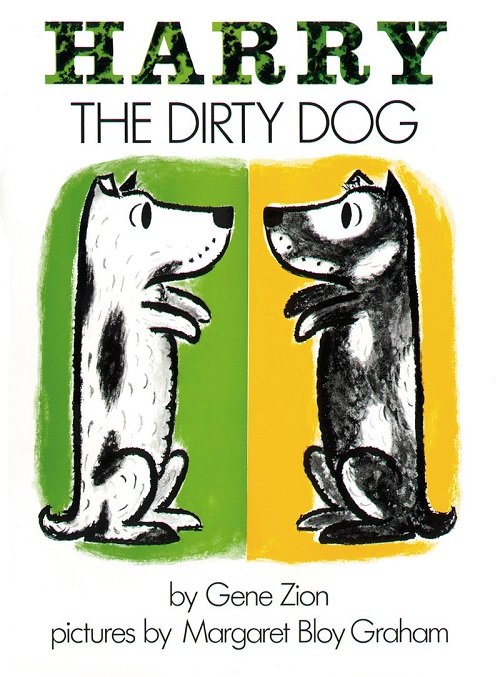
Harry the Dirty Dog
- action verbs
- comparatives & superlatives
- narrative retell
- sequencing
- past tense verbs
Review
Harry is a white dog with black spots, who detests having baths. So one day, he steals the bath brush, buries it in the yard and runs away from home. By the time he returns home, he is so dirty that he looks like a black dog with spots - and his family don’t even recognise him!
In print since 1956, Harry the Dirty Dog is a timeless story with a loveable main character and a humour story plot. This book has a true narrative structure with a traditional opening (“one day”), character description, multiple settings changes, clear problem, plans to overcome the problem and a happy resolution. This makes Harry the Dirty Dog an ideal choice for children working on their narrative retell skills. For younger children, it can also be used for a simple sequencing activity. I also like using this story for teaching comparatives and superlatives due to the lovely visual and verbal build-up of Harry becoming dirtier and dirtier until he’s at his dirtiest.
For further speech and language targets in Harry the Dirty Dog, see the list below.
Book Details
Narrative Structure: Complete Episode ; True Narrative
Story Plot: Journey Tale
- animals - pets, dogs
- bath
- bathtime
- places - home, garden
Speech and Language Targets
- /h/ - Harry, home, hungry, house
- adverbials (slowly, furiously, happily, lovingly, soundly)
- comparative (dirtier)
- superlative (dirtiest)
- regular past tense
- irregular past tense verbs (heard, took, ran, slid, sat, sang, shook, slept)
- action verbs (e.g. dig, slide, play, crawl, roll, dance, sing, run, jump)
- mental verbs (wonder, thought)
- explaining means to a goal (e.g. what could Harry do to convince his family that it's him? How could Harry get clean again?)
- figurative language - simile ("it worked like magic")
- descriptive concepts (dirty, clean)
- problem solving
- traditional opening
- character description
- time
- setting
- sequencing
- initiating event
- problem
- plans
- feelings
- resolution
- direct character speech
Book Info
Published by HarperCollins Publishers Inc in 2001 (ISBN: 9780064430098)

